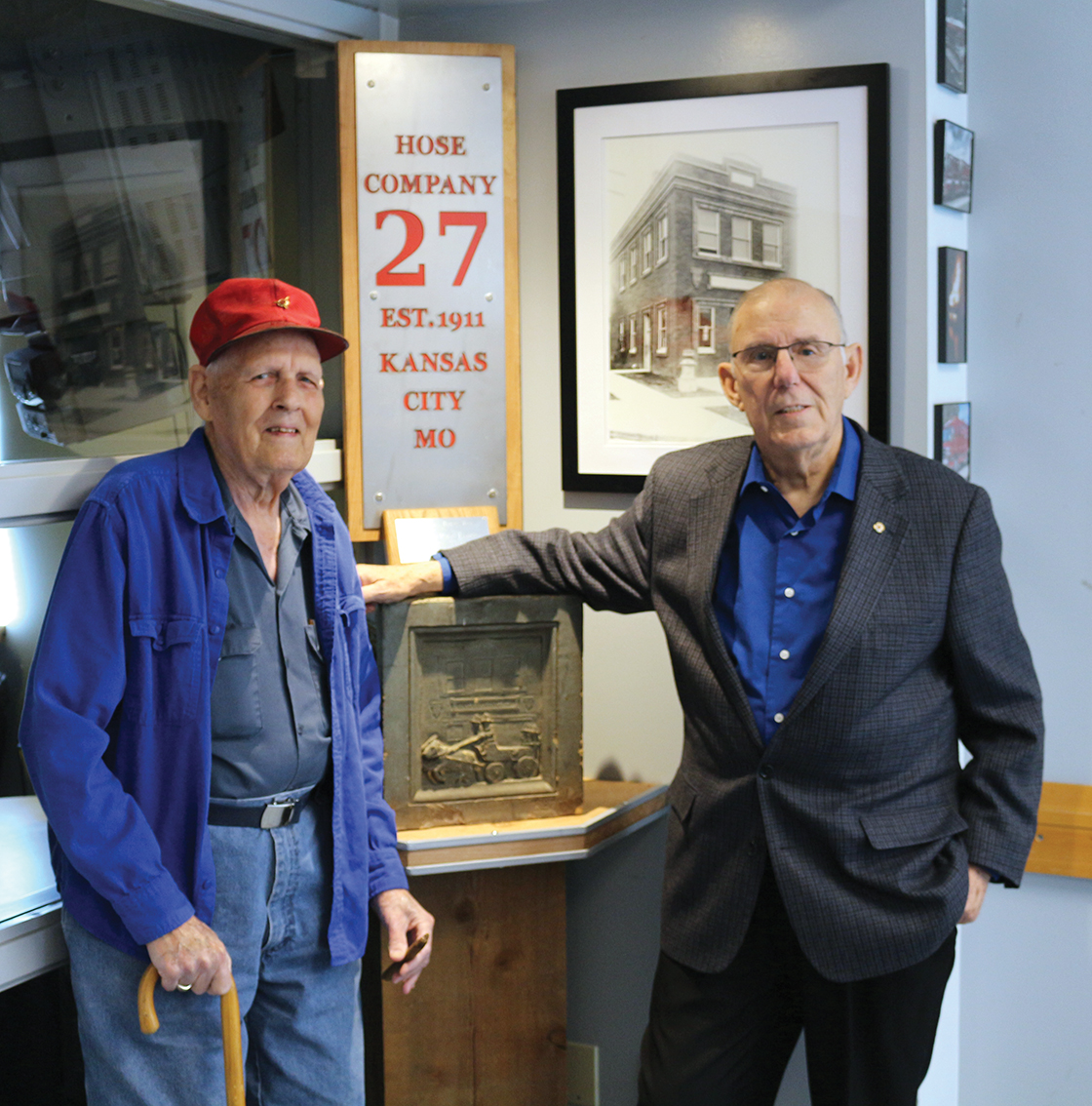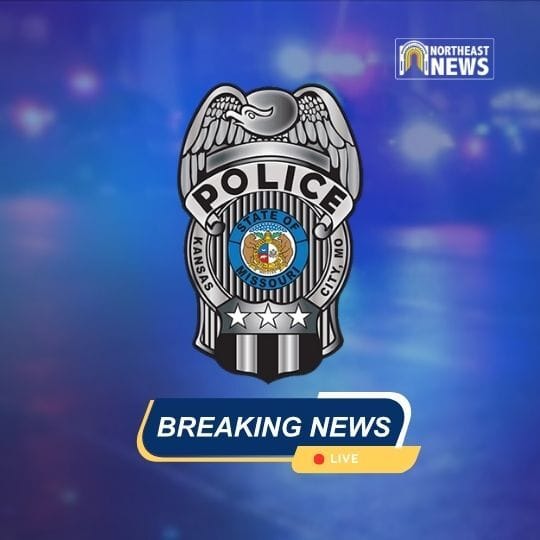Abby Cambiano
Northeast News
“I didn’t know they’d make such a big fuss over a piece of rock,” Howard Geelan said as he joined firefighters at Kansas City Fire Department Station 27 (Truman Rd. & Bennington Ave.) for lunch on October 24.
“I had this stone in the basement for years and one day I thought well, no need for it to sit there. Nobody can see it, nobody knows it’s there,” Geelan said.
The stone he referred to was once part of a decorative flower pot that sat outside the fire station years ago. Geelan called the museum at Union Station, but could not get an answer, so he called the Nelson Atkins Museum of Art, who showed some interest. He finally got in touch with someone who pointed him in the direction of Ray Elder, historian for the Kansas City Fire Department.
Elder shared the story Geelan told him about a decade ago.
Howard was about 9 years old in 1939, or 1940. He would often visit the lot across the street from the fire station, they called it “the dump”, and look for scrap metal, and other interesting things, to sell. Durban Corporation, the junk yard on 12th Street on the west side of the cemetery, would normally buy the scraps of steel. One day he saw a block laying in the median between the sidewalk and the street. He recognized that it was from firehouse 27 because of the inscription, so he went home to get his wagon.
When he returned, young Geelan realized he couldn’t lift the block, so he laid his wagon on its side and scooted the block into it, and then was able to turn the wagon upright and pull it home.
“He came over and got it and said he’d let me know when they replaced it – I didn’t know at that time they had even removed the old firehouse,” Geelan said. “I thought it was still standing because I have never been out this way in 30 or 40 years, something like that. So that made me kind of sad they tore the building down.”
In 1993, the original Station 27 was torn down. It was rebuilt and went back into service in March of 1996.
Elder bargained with Geelan and ultimately bought it for around $50. He then took it home and kept it for 6 years, until he visited Station 27 to share the history of the department. He told the firefighters about the block and they convinced him to bring it up.
“Especially Joe Ferrara, the captain, got all excited so I said okay, I’ll bring it out. So I brought it out and I give it to him, and I said, ‘I’m going to check on you in about a year to see if it’s still in the closet downstairs or something.’ Elder said.
“They got right on it. I think about three or four months after I gave it to them they started building and working and putting that up in the corner.”
“He said he’d let me know when they had a place to put it, I forgot about it the last couple, three years, then he called me the other day and said, ‘I’d hoped I was able to get ahold of you.’ Well, I haven’t passed away yet,” Geelan said.
He was joined by family, friends and neighbors to take a tour of Station 27 and meet the firefighters on October 24.
Station 27 is home to KCFD’s Hazardous Materials Team (Hazmat). The first Hazmat team in the city went into service in 1989 following the explosion in south Kansas City that killed six firefighters. Pumper companies 30 and 41 were lost in the explosion. To honor them, the numbers were added together and Hazmat 71 was formed.
The block is displayed in the upstairs dining room of Station 27, surrounded by photos from the station’s and the department’s history, dating back to the very beginning, with a plaque thanking Elder for its return to its original home.
“I’m proud that they could, you know, keep it with the house that it was originally made for,” Geelan said. “I’ve always had an admiration for the fire department. Before they took this stone and put it on the other side of the street, like the picture shows, it was a single door. Well, they had two fire trucks in there and they had to pull one firetruck out to get the other one out. One big one and one little one … they finally, before the second World War, decided to go ahead and cut that out, make it two doors.”
“They’d run the Ahrens-Fox and LaFrance fire trucks and I remember the Ahrens-Fox,” Geelan reminisced. “I could just lay my arm on top of the fender it was so tall. They were big. The Ahrens-Fox had a dome sitting up in front of the radiator. I don’t know what it was for, all shiny, nice and red. I watched that every time it would come down Bennington [Avenue]… we’d run out to the street and watch them go by.”
Elder, who was a firefighter for 35 years, has been working on the Kansas City Fire Department Museum’s new location at 7309 Troost. When it opens, it will house one of the antique trucks Geelan remembered from childhood. KCFD switched to all mechanical in 1919.
“We have a fire truck out there, two fire trucks to be exact. One of them is about 95 percent restored, the other one is 100 percent restored. The 95 percent is a 1919 fire truck that actually belonged to Kansas City. The fire station it’s in, 7309 Troost, one time was its home.”
The other is a 1927 Ahrens-Fox, like the one Geelan remembered with the big silver ball on the front-the pulsation chamber- which ensured that a steady stream of water was produced when the pistons pumped the water.
Now, almost 80 years later, the last remaining piece of the original station that Geelan admired so often as a child has been returned.
“Every picture that I have of the fire station in my collection, it went in service in 1911, everything I can find on the fire station, the pictures, that thing has always been standing up out there,” Elder said. “We brought it back home.”




















